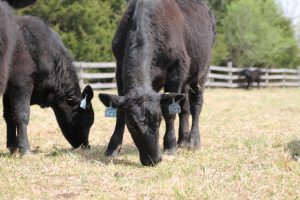This week we will be giving you some general information on rotational grazing and how we are using it in our research project.
Rotational grazing can be a benefit to many farmers and ranchers. Proper rotational grazing results in improved and even forage production, especially during droughts. It can also create healthier livestock, decreased weed and erosion problems, and more uniform soil fertility levels.
 From 1993 to 1999, the use of rotational grazing in dairy operations increased 21%, and those numbers have increased since then as well. Rotational grazing has become popular because of the economic and environmental benefits, as well as the time it saves to graze cattle. Rather than moving the herd from field to field, a grazer can rotate the livestock from paddock to paddock in one field.
From 1993 to 1999, the use of rotational grazing in dairy operations increased 21%, and those numbers have increased since then as well. Rotational grazing has become popular because of the economic and environmental benefits, as well as the time it saves to graze cattle. Rather than moving the herd from field to field, a grazer can rotate the livestock from paddock to paddock in one field.
In this project we used rotational grazing to benefit the calf production. We determined which paddock with proper forage growth the calves needed to be rotated into every three and a half days. This gave enough time for the grass to grow back where they had been before. In each range we had four steers, with nine paddocks in each range. This was enough area for the steers to properly graze on in order to be on the right amount of forage at the correct maturity.
